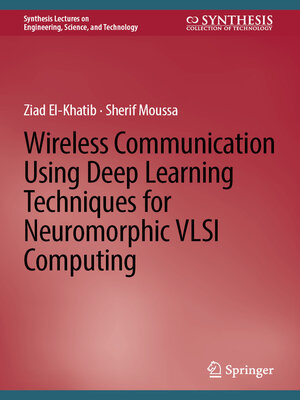Wireless Communication Using Deep Learning Techniques for Neuromorphic VLSI Computing
ebook ∣ Synthesis Lectures on Engineering, Science, and Technology
By Ziad El-Khatib

Sign up to save your library
With an OverDrive account, you can save your favorite libraries for at-a-glance information about availability. Find out more about OverDrive accounts.
Find this title in Libby, the library reading app by OverDrive.



Search for a digital library with this title
Title found at these libraries:
| Library Name | Distance |
|---|---|
| Loading... |
This book describes Deep Learning-based architecture design for intelligent wireless communication systems and specifically for Deep Learning-based receiver design. Deep Learning-based architecture design utilizes Deep Learning (DL) techniques to reformulate the traditional block-based wireless communication architecture. Deep Learning-based algorithm design utilizes Deep Learning methods to speed up the processing at a guaranteed high accuracy performance. Automatic signal modulation classification in AI-based wireless communication can be done using deep learning techniques to improve dynamic spectrum allocation. Automatic signal modulation recognition in wireless communication is described using Deep Learning techniques to improve resource shortage and spectrum utilization efficiency. Moreover, using deep learning neural network circuit methods and doing parallel computations on hardware can reduce costs. Spiking neural network (SNN) provides a promising solution for low-power hardware for neuromorphic computing. Spiking Neural Networks circuit functions with a pre-trained network's weights consume less power. Spiking neural network is more promising than other neural networks that can pave a new way for low-power computing applications. Analog VLSI is utilized to design spiking neural networks circuits such as silicon synapse and CMOS neuron.







